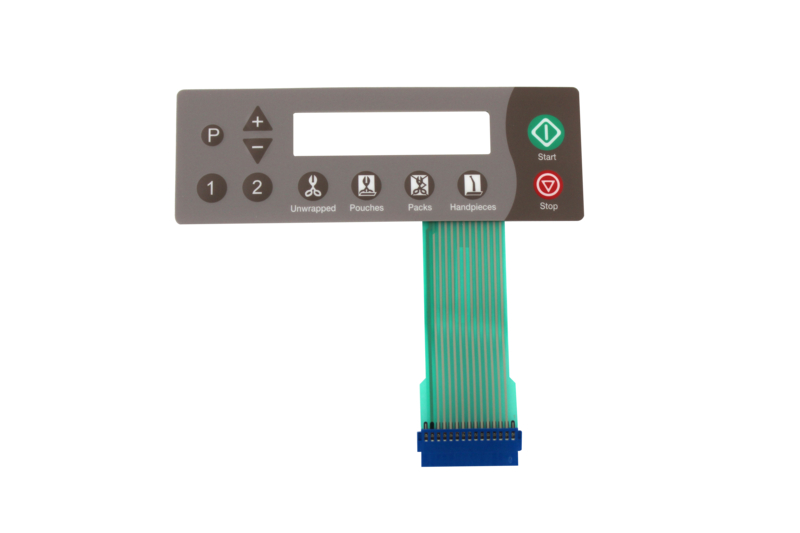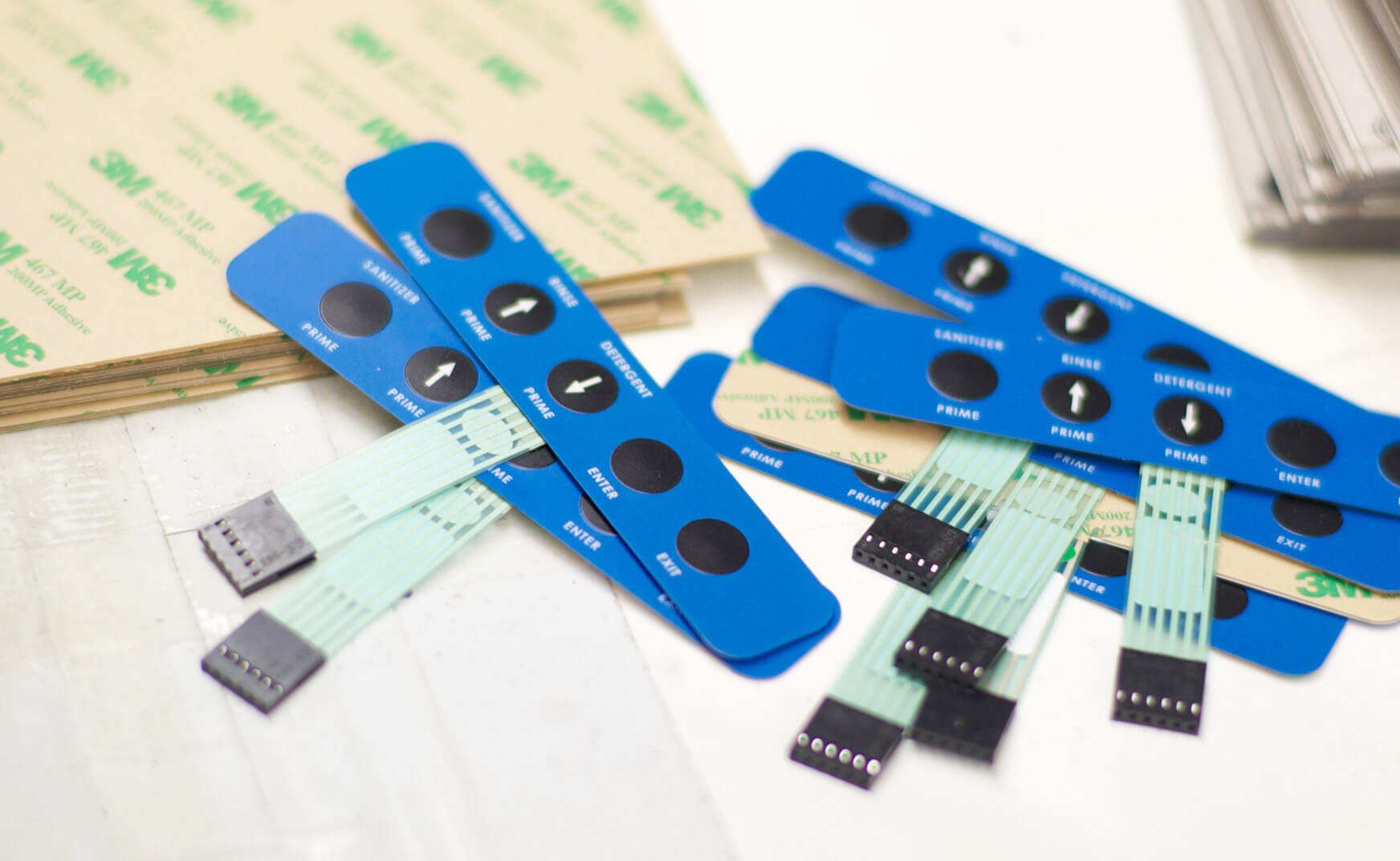A reputable membrane switch manufacturer provides both prototyping and large-scale options.
A reputable membrane switch manufacturer provides both prototyping and large-scale options.
Blog Article
All About Membrane Layer Change: Understanding Its Style and Functionality
When you assume about the control user interfaces in contemporary gadgets, membrane buttons often come to mind. Let's explore what sets membrane switches apart from other control systems.
What Are Membrane Layer Buttons?

Their smooth nature makes them easy to clean and resistant to dust and dampness, an important attribute in lots of atmospheres. Membrane layer switches can also be personalized relating to shape, size, and graphics, allowing manufacturers to produce unique user interfaces tailored to details products. And also, they're light-weight and slim, which assists in minimizing the total mass of devices. Generally, membrane layer switches play a significant duty in enhancing customer experience across a large range of applications.
Exactly How Membrane Layer Switches Work
When you press a trick on a membrane layer button, it activates a straightforward yet effective device. The leading layer, usually constructed from flexible product, presses down onto a conductive layer under it. This activity bridges the space in between conductive traces, finishing an electrical circuit. As quickly as the circuit closes, it sends out a signal to the gadget's controller, which translates your input.
You'll notice that the responsive responses varies based on the button design, supplying either a soft click or a much more noticable feedback. As soon as you launch the trick, the membrane go back to its initial placement, resuming the circuit and quiting the signal. This procedure occurs nearly immediately, ensuring a receptive user experience.
Membrane layer switches are prominent due to their sturdiness and resistance to dirt and moisture, making them ideal for different applications, from home devices to clinical tools. Recognizing this operation helps you value their extensive use.
Key Parts of Membrane Buttons
Recognizing the key parts of membrane switches is fundamental for grasping their capability and style. At the core, you'll locate the graphic overlay, which offers the aesthetic user interface for customers. Underneath that, there's a spacer layer that divides the circuit layers, guaranteeing that they do not make get in touch with till pushed. The circuit layer is where the magic takes place; it contains conductive traces that complete the circuit when you press the button. One more crucial element is the adhesive support, permitting the button to comply with surfaces securely. The protective layer shields versus environmental variables and use, prolonging the button's life-span. Each part plays a substantial role in making certain trusted performance and user communication. By recognizing these components, you'll gain understanding into just how membrane switches over run and their relevance in different applications.
Materials Utilized in Membrane Layer Switch Over Design
The efficiency and durability of membrane changes heavily depend upon the products utilized in their style. You generally experience polyester and polycarbonate as primary substratums due to their outstanding strength and adaptability. These materials resist scrapes and chemicals, making them optimal for demanding environments.
The conductive layers usually utilize silver or carbon, selected for their integrity and conductivity. membrane switch manufacturer. Silver supplies superior efficiency, while carbon is an affordable alternative. For the overlay, you might take into consideration a matte or shiny coating, depending upon your aesthetic demands and customer experience
Make particular to select adhesives that endure environmental aspects like temperature and moisture. Picking the ideal materials will certainly ensure your membrane layer button stands the test of time.
Design Factors To Consider for Membrane Buttons
While designing membrane switches, it's vital to take into account different elements that influence their functionality and individual experience. Start by concentrating on the format and button size; make specific they're intuitive and very easy to browse.
Verify your layout suits ecological aspects, like dampness or temperature variants, which might influence efficiency. By thoroughly considering these components, you'll develop a membrane layer switch that improves use and satisfaction.
Applications of Membrane Layer Switches
Membrane layer switches are versatile elements found in different applications, from industrial equipment to consumer electronics. You'll see their effect in equipments that require durable user interfaces and in gadgets that benefit from smooth layouts. Recognizing these applications helps you appreciate the capability and practicality of membrane layer switches in daily innovation.
Industrial Equipment Usage
When you're aiming to enhance the functionality of commercial tools, membrane layer buttons offer a trustworthy service that integrates sturdiness with straightforward style. These buttons are excellent for severe environments, providing resistance to dirt, dampness, and chemicals. You'll discover them in control panels for making machines, a/c systems, and view it now clinical gadgets, where accuracy and responsiveness are important. Their low account implies they fit seamlessly into various tools, conserving useful room while preserving convenience of use. With adjustable graphics and backlighting alternatives, you can produce an user-friendly user interface for operators, boosting efficiency and safety. Plus, their lengthy life expectancy reduces upkeep expenses, making them a smart investment for your commercial applications. Embrace membrane layer buttons to improve your procedures and improve general efficiency.
Consumer Electronic Devices Combination
In the domain of customer electronics, membrane layer switches play a vital role in enhancing individual communication and device performance. Membrane layer switches likewise ensure durability and resistance to dust and wetness, prolonging the life-span of your electronics. By choosing his comment is here membrane layer buttons, you boost not just the performance yet likewise the design of your devices, making day-to-day interactions smooth and delightful.
Benefits and Downsides of Membrane Buttons
While membrane switches offer an array of advantages, they also come with some disadvantages that you must take into consideration. One substantial benefit is their compact design, making them ideal for space-constrained applications.

Nonetheless, there are disadvantages. Membrane layer switches can have a shorter life expectancy compared to mechanical buttons, especially under hefty use. They can also be less tactile, which might influence customer responses during procedure. If harmed, fixing them can be tough and typically needs complete substitute. Ultimately, their sensitivity to extreme temperatures and ecological problems might limit their effectiveness in specific settings. Balancing these pros and cons will assist you figure out if membrane switches are the ideal suitable for your job.
Often Asked Concerns
How Much Time Do Membrane Switches Typically Last?
Membrane layer switches normally last between 5 to one decade, depending upon usage and environmental conditions. You'll want to review aspects like wear, exposure to wetness, and temperature level fluctuations to assess their longevity effectively.
Can Membrane Switches Be Customized for Specific Layouts?
Yes, you can tailor membrane buttons to fit details designs (membrane switch manufacturer). You'll have the liberty to select colors, shapes, and layouts that match your task's requirements, guaranteeing they blend seamlessly with your total aesthetic
What Is the Expense Range for Membrane Layer Switch Over Production?
The expense range for membrane layer button manufacturing usually falls between $1 and $10 per unit, depending on elements like style complexity, quantity, and materials. You can obtain quotes from producers to discover the very best alternative.

Are Membrane Layer Switches Over Water Resistant or Resistant?
Membrane switches can be review created to be water resistant or resistant, depending upon products made use of and building approaches. If you need them for wet environments, guarantee you define those needs during the layout procedure.
Just How Do Membrane Layer Switches Contrast to Typical Buttons?
Membrane layer switches are usually thinner and much more flexible than standard switches, offering a sleek layout. They're typically less complicated to clean up and incorporate, however could not provide the responsive feedback you're utilized to with mechanical options.
Final thought

Report this page